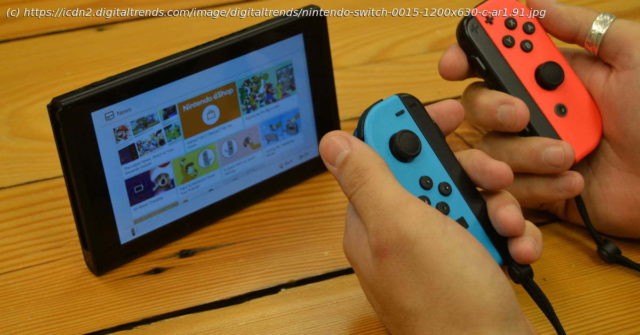The Nintendo Switch is a fantastic console, but it still suffers from some technical issues. Here are some of the problems you might see and how to fix them.
The Nintendo Switch is one of the most popular consoles on the market — with great exclusives like Super Mario Odysseyand Splatoon 2 — but that doesn’t mean it’s immune to technical problems.
From relatively minor cosmetic damage that can largely be ignored to serious issues that have rendered players’ systems useless, we’ve compiled a list of the most common problems that have befallen Switch owners. When applicable, we’ve also included possible solutions, though we must stress that anything involving taking apart a piece of your console could potentially make the problems worse or void your warranty.
Getting in touch with Nintendo
Moving the Nintendo Switch from its portable configuration into the dock is a process that takes only seconds. If you don’t put the console in perfectly straight, however, it’s quite easy for the dock to leave permanent damage on the outside of your screen. The damage seems to be caused by two pieces of plastic protruding inside the dock, which will make contact with the outside bezel of the Switch at either end of the console when it’s dropped into place.
A screen protector is a must-have accessory, as any damage done by the dock will be to the removable protector and not the console itself. However, early, flexible screen protector kits released for the system, including the “official” PDP product, were cut incorrectly, causing bubbles. Tempered glass covers shouldn’t suffer from this problem. It’s advised to wait about 24 hours before docking your system after using a tempered glass protector, however, as the adhesive could melt if not allowed to set.
In the meantime, users have taped microfiber cloths to the inside of the dock to cover up the two plastic protrusions, as well as small foam pads that cover the dock’s internal nubs. If you can stand spending $8 on something that you’ll remove in a few weeks once your tempered glass protector arrives, you might still want to temporarily install one of the plastic ones.
Should you want your Switch to be protected inside the dock and look absolutely adorable, there is another option that will eliminate the need to use a screen protector altogether, assuming you won’t be traveling with the system. Etsy user TinckoyMakesitSew sells several Switch dock cozies, with themes like Mario, Zelda, classic Nintendo Entertainment System, and Pokémon, as well as several solid colors.
Provided that you have a little extra room for the Switch to sit on your shelf, a slightly more complicated option involves leaving the Switch out of the dock entirely. By connecting an additional USB-C cable to both the dock and the Switch — and placing the Switch on a separate stand so its vents have enough room — the console can still project its image to a television and draw power as if it were sitting in the dock directly. It’s an imperfect solution that could lead to some disconnections, so we recommend experimenting with several cables in order to get a tight fit.
The most notorious of the Nintendo Switch’s issues thus far, disconnecting left Joy-Con controller, appears to be a fairly widespread problem. The Joy-Con can disconnect with the console, seemingly at random, which can be extra frustrating if it leads to being killed during a good run in Breath of the Wild. Squeezing the controller, placing it behind one’s back, and covering the front of it with a hand all appear to exacerbate the problem.
According to multiple reports and user teardowns, the problem appears to stem from Nintendo’s decision to put the left controller’s Bluetooth antenna inside the circuit board, rather than using a discrete component, which could be positioned optimally.
Nintendo hasn’t publicized it, but the manufacturer seems to have created a passable DIY hack for early adopters.






